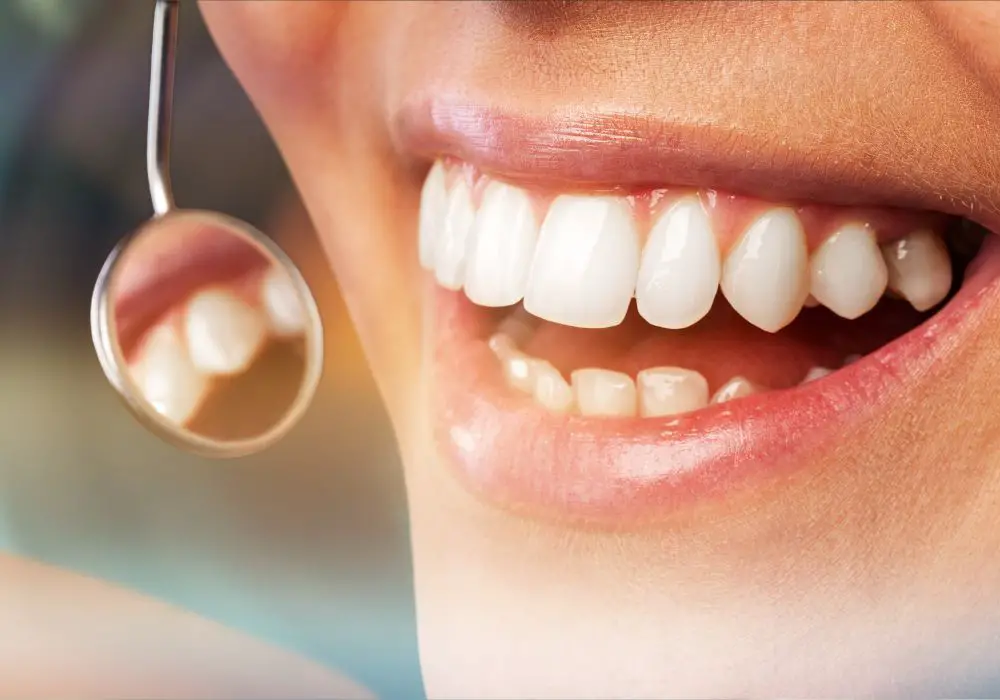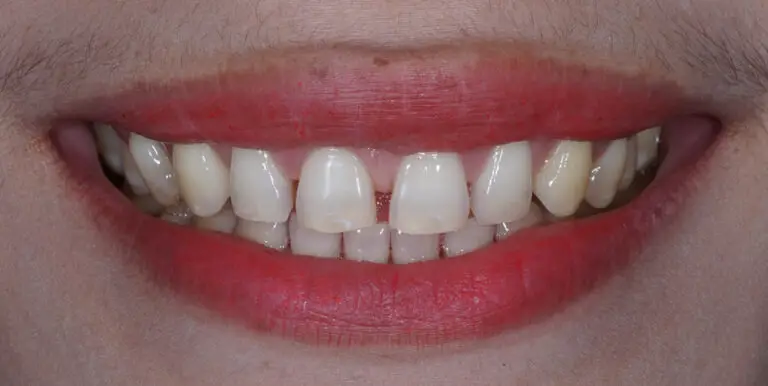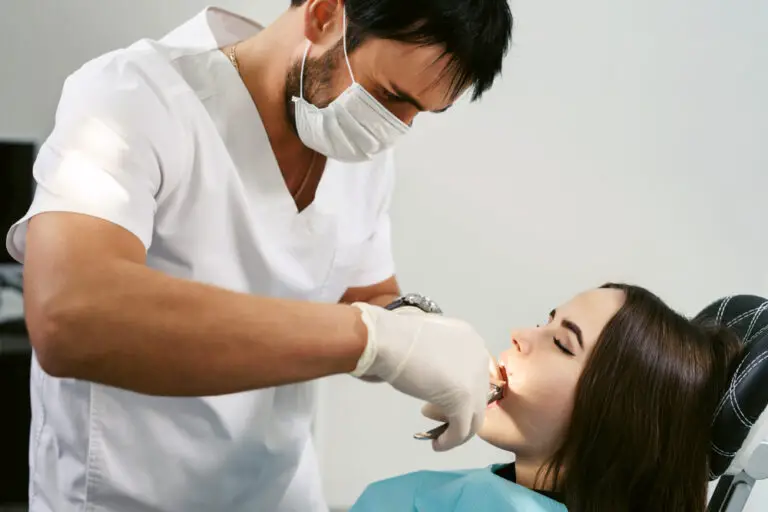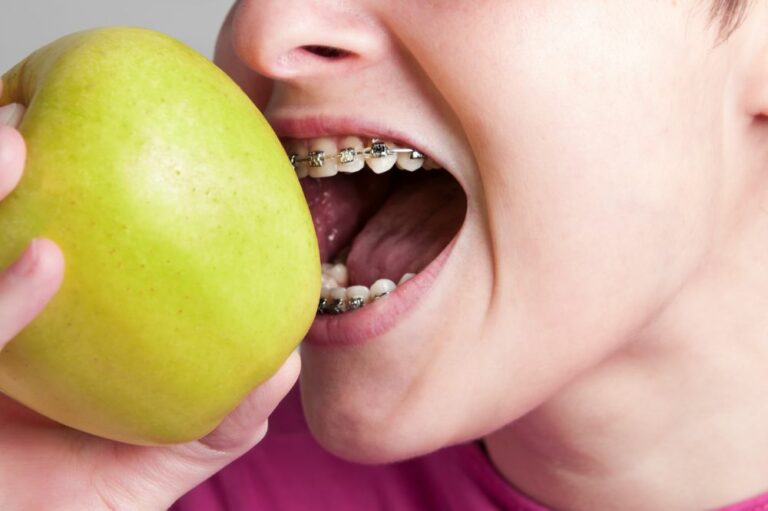Have you ever wondered what keeps your teeth in place? The answer is not as simple as you might think. Your teeth are held in by a combination of factors, including the periodontal ligament, cementum, and alveolar bone.
The periodontal ligament is a thin layer of connective tissue that surrounds the root of your tooth and attaches it to the alveolar bone. It contains blood vessels and nerves that supply your tooth with nutrients and sensation. The cementum is a layer of hard tissue that covers the root of your tooth and helps anchor the periodontal ligament. Finally, the alveolar bone is the bone that surrounds and supports your teeth. It forms the socket that your tooth sits in and provides the foundation for your teeth.
Understanding what holds your teeth in place is important for maintaining good oral health. By taking care of your teeth and gums, you can help ensure that they stay firmly in place for years to come. So, make sure to brush and floss regularly, eat a healthy diet, and visit your dentist for regular checkups and cleanings.
The Role of the Jawbone

Your jawbone plays a critical role in holding your teeth in place. Let’s take a closer look at the structure and health of your jawbone.
Jawbone Structure
The jawbone, also known as the alveolar bone, is the bone that surrounds and supports your teeth. It contains the tooth sockets, which hold your teeth in place. The jawbone is made up of two main parts: the maxilla, which is the upper jawbone, and the mandible, which is the lower jawbone.
The maxilla is a fixed bone, while the mandible is the only moving bone in the skull. The mandible is attached to the skull by the temporomandibular joint (TMJ), which allows you to open and close your mouth.
Jawbone Health
To keep your teeth in good health, it’s important to maintain the health of your jawbone. The jawbone can be affected by a variety of factors, including gum disease, tooth loss, and trauma.
Gum disease, also known as periodontal disease, can cause the jawbone to deteriorate over time. This can lead to tooth loss and other dental problems.
Tooth loss can also affect the health of your jawbone. When a tooth is lost, the jawbone is no longer stimulated by the tooth’s root. This can cause the jawbone to shrink over time, which can lead to further tooth loss and other dental problems.
Trauma to the jawbone can also affect its health. Fractures or other injuries to the jawbone can cause it to weaken and become more susceptible to dental problems.
Maintaining good oral hygiene and visiting your dentist regularly can help keep your jawbone and teeth healthy. Your dentist can also recommend treatments to help prevent or treat gum disease, tooth loss, and other dental problems that can affect the health of your jawbone.
The Importance of Gums
Your gums are an essential part of your oral health. They play a crucial role in holding your teeth in place and protecting the bones that support your teeth. In this section, we will discuss the structure of gums and various gum diseases.
Gum Structure
Gums, also known as gingivae, are soft tissues that cover the bone around the teeth. They are made up of two layers: the outer layer, which is visible in the mouth, and the inner layer, which is attached to the bone. The outer layer of gums is pink and firm, while the inner layer is soft and red.
The gums act as a seal around your teeth, protecting the bone and other tissues from bacteria and other harmful substances. When you brush your teeth, you should also brush your gums gently to remove any plaque or bacteria that may have accumulated there.
Gum Diseases
Gum diseases, also known as periodontal diseases, are infections that affect the gums and the bones that support the teeth. The most common gum diseases are gingivitis and periodontitis.
Gingivitis is the early stage of gum disease, and it is caused by the buildup of plaque on the teeth. The symptoms of gingivitis include red, swollen, and bleeding gums. If left untreated, gingivitis can progress to periodontitis.
Periodontitis is a more severe form of gum disease that can cause irreversible damage to the gums and the bones that support the teeth. The symptoms of periodontitis include receding gums, loose teeth, and changes in the bite. If left untreated, periodontitis can lead to tooth loss.
To prevent gum diseases, you should practice good oral hygiene, including brushing your teeth twice a day, flossing daily, and seeing a dentist regularly. If you notice any symptoms of gum disease, such as bleeding or swollen gums, you should see a dentist as soon as possible.
In conclusion, your gums are crucial for holding your teeth in place and protecting the bones that support your teeth. Therefore, it is essential to take care of your gums by practicing good oral hygiene and seeing a dentist regularly.
The Function of Periodontal Ligaments

Your teeth are held in place by a soft tissue called the periodontal ligament (PDL). This ligament connects your teeth to the bone and helps to keep them in place. Although many people believe that the bone and gum tissue hold your teeth in place, it is actually the PDL that does this job.
The PDL has several important functions that help to keep your teeth healthy and strong. These include:
Supporting Your Teeth
The PDL fibers support your teeth in their sockets and help to keep the gingival tissues (gums) in the proper relationship with your teeth and the alveolar bone. This support is crucial for maintaining the stability of your teeth and preventing them from becoming loose or falling out.
Absorbing Shock
The PDL fibers act as a shock absorber and help to withstand and absorb the impact of masticatory forces. This means that when you chew or bite down on food, the PDL helps to distribute the pressure evenly across your teeth and prevent damage to your tooth roots and surrounding bone.
Providing Nutrients and Control
In addition to connective tissue and collagen fibers, the PDL contains blood vessels and nerves. The blood vessels supply the ligament with nutrients, while the nerves are responsible for controlling the amount of force used while chewing. This ensures that your teeth are not subjected to excessive pressure and helps to prevent damage or injury to your teeth and surrounding tissues.
Overall, the PDL is a vital component of your dental health and plays a crucial role in keeping your teeth strong, healthy, and firmly in place. By understanding how the PDL works and what it does, you can take steps to protect your teeth and ensure that they stay healthy for years to come.
The Impact of Dental Cementum
Dental cementum is a thin layer of calcified tissue that covers the root of a tooth. It is softer than enamel or dentin and is yellowish in color. Cementum plays a vital role in holding teeth in place and protecting the underlying dentin.
One of the main functions of cementum is to anchor the tooth to the jawbone via the periodontal ligament. This ligament is a fibrous tissue that connects the cementum to the alveolar bone. The cementum provides a surface for the periodontal ligament fibers to attach to, which helps to keep the tooth stable and secure.
Cementum also helps to protect the underlying dentin by covering the root surface. Dentin is softer than enamel and can be easily damaged by abrasion or erosion. Cementum acts as a barrier, preventing harmful substances from reaching the dentin and causing damage.
As you age, your gums may recede, exposing the roots of your teeth. This can lead to the cementum being worn away, which can cause tooth sensitivity and make your teeth more vulnerable to decay. However, cementum is also involved in the repair and regeneration of teeth. Cementoblasts, the cells that produce cementum, can lay down new layers of cementum to repair damage and protect the tooth.
In summary, dental cementum is a crucial component of the tooth structure. It helps to anchor the tooth to the jawbone, protects the underlying dentin, and can repair damage to the tooth surface. Maintaining healthy cementum is essential for keeping your teeth strong and healthy.
Oral Hygiene and Its Effect
Maintaining good oral hygiene is not only important for the health of your teeth and gums, but it can also have a positive impact on your overall health. By practicing good oral hygiene habits, you can prevent the buildup of harmful bacteria in your mouth that can lead to tooth decay, gum disease, and other health problems.
Proper Brushing Techniques
Brushing your teeth is one of the most important things you can do for your oral health. However, it’s not just about brushing your teeth, but also about brushing them properly. Here are some tips to ensure you’re brushing your teeth effectively:
- Brush your teeth twice a day for at least two minutes each time.
- Use a soft-bristled toothbrush to avoid damaging your teeth and gums.
- Hold your toothbrush at a 45-degree angle to your teeth and brush in circular motions.
- Don’t forget to brush your tongue to remove bacteria that can cause bad breath.
Flossing and Its Benefits
Flossing is another important part of maintaining good oral hygiene. It helps remove food particles and plaque from between your teeth and along your gum line. Here are some benefits of flossing:
- Prevents gum disease and tooth decay by removing plaque.
- Helps freshen breath by removing food particles and bacteria.
- Reduces the risk of developing other health problems such as heart disease, stroke, and diabetes.
To get the most out of flossing, make sure to floss at least once a day. Use a piece of floss that is long enough to reach all of your teeth and wrap it around your fingers to create tension. Gently slide the floss between your teeth and along your gum line, making sure to reach all the way to the base of each tooth.
By following these oral hygiene tips, you can keep your teeth and gums healthy and prevent the buildup of harmful bacteria in your mouth. Remember, good oral hygiene is essential for your overall health and well-being.
Dental Procedures for Tooth Stability

If you have loose or missing teeth, there are several dental procedures that can help restore stability and improve your oral health. Here are two common procedures that your dentist may recommend:
Root Canal Therapy
Root canal therapy is a dental procedure that can help save a damaged or infected tooth. During the procedure, your dentist will remove the damaged or infected tooth pulp, clean the tooth, and then fill and seal the tooth with a dental filling. This can help prevent further damage to the tooth and improve its stability.
Root canal therapy may be recommended if you have a tooth that is:
- Cracked or chipped
- Infected
- Decayed
- Inflamed
Dental Implants
Dental implants are a popular tooth replacement option that can help restore stability and improve the appearance of your smile. During the procedure, your dentist will insert a small titanium post into your jawbone, which will serve as the root of your new tooth. Once the post has fused with your jawbone, your dentist will attach a dental crown to the post, which will act as your new tooth.
Dental implants may be recommended if you have:
- Missing teeth
- Loose teeth
- Damaged teeth that cannot be saved with other dental procedures
Dental implants are a long-lasting solution to tooth loss, and with proper care, they can last a lifetime.
In summary, root canal therapy and dental implants are two common dental procedures that can help improve tooth stability and restore your smile. If you are experiencing loose or missing teeth, talk to your dentist about which procedure may be right for you.
Frequently Asked Questions
How are teeth attached to the jaw bone?
Teeth are attached to the jaw bone by a fibrous ligament called the periodontal ligament. This ligament acts like a shock absorber, cushioning the tooth against the forces of chewing and biting.
What is the material covering the tooth root?
The tooth root is covered by a hard, calcified tissue called cementum. Cementum helps to anchor the periodontal ligament fibers that attach the tooth to the jaw bone.
Which part of the tooth contains blood vessels and nerves?
The pulp of the tooth contains blood vessels and nerves. The pulp is located in the center of the tooth and extends from the crown to the tip of the root.
What is the portion of the tooth embedded in bone?
The root of the tooth is the portion that is embedded in bone. The root is covered by cementum and is anchored to the jaw bone by the periodontal ligament.
How many roots do teeth have?
Teeth can have one, two, or three roots depending on their location and function in the mouth. For example, molars typically have two or three roots, while front teeth usually have only one.
What holds your front teeth in place?
Your front teeth are held in place by the periodontal ligament. This ligament attaches the tooth to the jaw bone and acts like a shock absorber, cushioning the tooth against the forces of chewing and biting.






